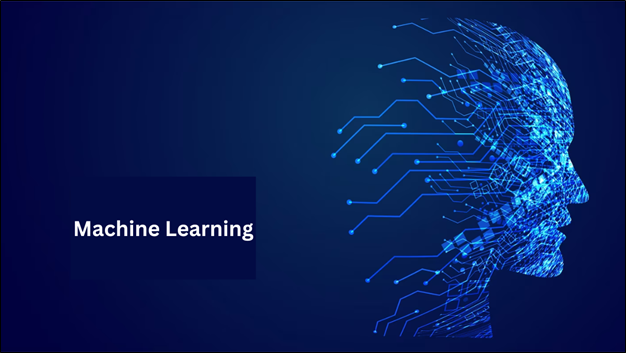Demystifying Data Science: A Beginner's Expedition into the World of Data

Introduction to Data Science
Data science is a rapidly growing field that combines various techniques and methodologies to extract insights and knowledge from data. With the advent of technology and the exponential growth of data, understanding the basics of data science has become crucial in today's world.
Understanding the basics of data science
Data science encompasses a wide range of disciplines, including statistics, mathematics, computer science, and domain-specific knowledge. It involves collecting, processing, analyzing, and interpreting data to identify patterns, make predictions, and drive informed decision-making.
Importance of data science in the modern world
In today's data-driven era, data science plays a pivotal role in various industries and sectors. It enables organizations to gain valuable insights from their data, optimize operations, enhance customer experiences, and develop innovative products and services. From healthcare to finance, from e-commerce to marketing, data science is revolutionizing every facet of our lives.
Overview of the different domains of data science
Data science encompasses several domains, each with its own unique focus and applications. Some common domains include:
- Exploratory Data Analysis (EDA): EDA aims to understand the data by conducting descriptive and visual analysis. It involves summarizing data, identifying trends, and detecting outliers.
- Machine Learning: Machine learning is a subfield of data science that focuses on developing algorithms and models that can automatically learn from data and make predictions or take actions without explicit programming.

- Natural Language Processing (NLP): NLP deals with the interaction between computers and human language. It involves tasks such as sentiment analysis, language translation, and text summarization.
- Big Data Analytics: Big data analytics deals with processing and analyzing large volumes of data that cannot be handled by traditional methods. It employs techniques such as distributed computing and parallel processing to extract insights from massive datasets.
Getting Started with Data Science
Embarking on a data science journey can be daunting, but with the right approach and mindset, it can also be incredibly rewarding. Here are the essential steps, skills, and tools you need to get started in the field of data science.
Steps to embark on a data science journey
- Set clear goals: Define your objectives and determine what you want to achieve with data science. Understanding your goals will help you stay focused and motivated throughout your journey.
- Learn the fundamentals: Start by grasping the basics of statistics, mathematics, and programming languages such as Python or R. These foundations will serve as a solid base for your data science endeavors.
- Gain practical experience: Theory is crucial, but practical application is equally important. Engage in real-world projects, competitions, and internships to gain hands-on experience in working with data.
- Continuously learn and adapt: Data science is a rapidly evolving field. Stay updated with the latest advancements, techniques, and tools through online courses, workshops, and research papers.
Essential skills for aspiring data scientists
To become a proficient data scientist, certain key skills are essential. These skills include:
- Statistical analysis: A strong foundation in statistical analysis is necessary for understanding patterns, testing hypotheses, and making data-driven decisions.
- Programming: Proficiency in programming languages like Python, R, or SQL is crucial for data manipulation, analysis, and modeling.
- Data visualization: The ability to effectively communicate insights through visualizations is vital for storytelling and conveying complex information to non-technical stakeholders.
- Machine learning: Knowledge of machine learning algorithms and techniques enables data scientists to build predictive models and make accurate predictions.
Tools and technologies required for data science
Data science involves working with large datasets and complex algorithms, requiring the use of specialized tools and technologies. Some commonly used tools in the field of data science include:
- Python: Python is a versatile and widely-used programming language that offers a rich ecosystem of libraries and frameworks for data manipulation, analysis, and visualization.
- R: R is a programming language specifically designed for statistical computing and graphics. It provides a wide range of packages and functions for data science tasks.
- SQL: Structured Query Language (SQL) is essential for working with relational databases and performing data manipulation and extraction operations.
- Tableau: Tableau is a powerful data visualization tool that allows data scientists to create interactive dashboards and visualizations for effective communication of insights.
Exploring Data: Collection and Preprocessing
Data is the lifeblood of data science, and understanding its nature and acquiring it in the right manner is crucial for accurate analysis. This section delves into the various aspects of data collection and preprocessing.
Understanding the nature of data
Data can take various forms, such as structured, unstructured, or semi-structured. Structured data is organized and follows a predefined model, like data in relational databases. Unstructured data, on the other hand, lacks a predefined structure and includes text, images, and videos. Semi-structured data lies somewhere in between and includes formats like XML or JSON.
Data collection techniques and sources
Data can be collected from various sources, such as surveys, social media platforms, sensors, or existing databases. Depending on the nature of the data, different techniques, such as web scraping, surveys, or data logging, can be employed to collect the required information.
The art of data cleaning and preprocessing
Raw data often contains errors, missing values, or inconsistencies, which can impact the accuracy of analysis. Data cleaning and preprocessing involve techniques such as outlier detection, imputation of missing values, and normalization to ensure the data is suitable for analysis.
Statistical Analysis in Data Science
Statistics is the backbone of data science, providing the tools and techniques necessary for analyzing and interpreting data. This section explores the role of statistics in data science and common statistical measures used in data analysis.
Role of statistics in data science
Statistics forms the basis for inferential analysis in data science. It helps in making predictions, testing hypotheses, and drawing meaningful conclusions from the available data. Statistical techniques, such as regression analysis or hypothesis testing, provide a framework for assessing relationships and making data-driven decisions.

Common statistical measures used in data analysis
- Measures of central tendency: Measures such as mean, median, and mode provide a summary of the central values within a dataset, enabling a better understanding of its distribution.
- Measures of dispersion: Measures like variance, standard deviation, and range quantify the spread of data points, helping in assessing the variability or consistency of the dataset.
- Correlation and covariance: Correlation measures the strength and direction of the relationship between two variables, while covariance measures the joint variability between two datasets.
Hypothesis testing and significance
Hypothesis testing allows data scientists to make inferences about populations based on sample data. It involves setting up null and alternative hypotheses, collecting sample data, and using statistical tests to determine the significance of the observed differences.
Data Visualization and Communication
Data visualization plays a pivotal role in data science, enabling effective communication of insights and patterns hidden within the data. In this section, we explore the importance of visualizing data, techniques for effective data visualization, and communicating data insights to non-technical stakeholders.
Importance of visualizing data
Visualizing data helps in uncovering patterns, trends, and outliers that may not be apparent in raw data. It simplifies complex information, making it easier to comprehend, identify patterns, and draw actionable insights. Visualizations also facilitate the identification of data quality issues or anomalies that may require further investigation.
Techniques for effective data visualization
- Selecting appropriate visualizations: Choosing the right type of chart or graph based on the data and the message you want to convey is crucial. Bar charts, line graphs, scatter plots, and heatmaps are just a few examples of the wide range of visualizations available.
- Designing aesthetically pleasing visuals: Attention should be paid to colors, fonts, and layout to ensure that the visualizations are easy on the eyes and convey the intended information effectively.
- Storytelling through data: Combining multiple visualizations into a cohesive narrative helps in telling a compelling story and guiding the audience through the insights hidden within the data.
Communicating data insights to non-technical stakeholders
Effective communication of data insights to non-technical stakeholders is essential for driving informed decision-making. To ensure successful communication, data scientists should:
- Know the audience: Understanding the knowledge level, interests, and goals of the audience helps in tailoring the message accordingly.
- Keep it simple: Presenting complex data in a simple and concise manner ensures that non-technical stakeholders can grasp the key takeaways without being overwhelmed.
- Provide context: Providing context to the data insights by relating them to real-world scenarios or business objectives helps stakeholders understand the significance and implications of the findings.
- Use visual aids: Visualizations and infographics play a crucial role in simplifying complex data for non-technical stakeholders, enabling them to comprehend the information more easily.
Machine Learning Fundamentals
Machine learning is an integral part of data science, empowering systems to automatically learn and improve from experience without being explicitly programmed. This section introduces the fundamentals of machine learning, supervised and unsupervised learning techniques, and their applications.
Introduction to machine learning
Machine learning is a branch of artificial intelligence that focuses on the development of algorithms and models that can learn and make predictions or take actions based on data. It encompasses various techniques, including supervised learning, unsupervised learning, and reinforcement learning.
Supervised learning techniques
Supervised learning involves training a model using labeled data, where the input variables (features) and the corresponding output variable (label) are known. The model learns the underlying patterns and relationships between the features and labels, enabling it to make predictions or classify new, unseen data.
Unsupervised learning techniques
Unlike supervised learning, unsupervised learning deals with unlabeled data, where only input variables are available. The aim of unsupervised learning is to discover patterns, relationships, or structures within the data. Techniques, such as clustering or dimensionality reduction, are commonly used in unsupervised learning.
Feature Engineering and Selection
Feature engineering and selection play a vital role in data preprocessing and model development. This section delves into the understanding of features and their significance, techniques for feature engineering, and strategies for feature selection.
Understanding features and their significance
Features, also known as variables or attributes, are measurable characteristics of the data that influence the outcome or target variable. Choosing the right features and understanding their significance is crucial for model accuracy and performance.
Techniques for feature engineering
Feature engineering involves creating new features or transforming existing ones to enhance the predictive power of the data. Techniques such as one-hot encoding, scaling, or creating interaction variables can add valuable information and improve model performance.
Strategies for feature selection
Feature selection is the process of identifying and selecting the most relevant features for model development. It aims to remove irrelevant or redundant features, reducing model complexity and improving interpretability. Strategies such as filter methods, wrapper methods, or embedded methods can be employed for feature selection.
Model Evaluation and Validation
Model evaluation and validation are essential steps in the data science workflow to assess the performance and reliability of the developed models. This section explores techniques for evaluating model performance, cross-validation to avoid overfitting, and validation techniques.
Evaluating model performance
Model performance evaluation involves measuring how well a developed model performs on unseen data. Common evaluation metrics include accuracy, precision, recall, F1 score, and ROC-AUC. The choice of evaluation metric depends on the specific problem and the nature of the data.
Cross-validation and overfitting
Cross-validation is a technique used to estimate the performance of a model on unseen data. It involves splitting the available data into multiple subsets, training the model on some subsets, and evaluating its performance on the remaining subsets. This helps in assessing the model's ability to generalize to new data and mitigating issues of overfitting.
Techniques for model validation
Model validation ensures that the developed model performs well on new, unseen data. Techniques such as holdout validation, k-fold cross-validation, or stratified sampling can be used to validate the model's performance and make necessary adjustments if required.
Neural Networks and Deep Learning
Neural networks and deep learning have gained significant popularity in recent years, revolutionizing several fields, including computer vision, natural language processing, and speech recognition. In this section, we introduce neural networks, explore deep learning architectures, and highlight real-world applications.
Introduction to neural networks
Neural networks are a class of machine learning models inspired by the structure and functioning of the human brain. They consist of interconnected artificial neurons called nodes or units, which process and transmit information. Neural networks have the ability to learn and make predictions by adjusting the weights and biases of their connections.
Exploring deep learning architectures
Deep learning, a subset of machine learning, focuses on training deep neural networks with multiple layers. These architectures, known as deep neural networks, can learn complex patterns and hierarchies in data. Convolutional Neural Networks (CNNs) for image analysis, Recurrent Neural Networks (RNNs) for sequential data, and Generative Adversarial Networks (GANs) for generating new content are examples of popular deep learning architectures.
Real-world applications of deep learning

Deep learning has revolutionized several industries and applications. Self-driving cars, speech recognition systems, recommendation engines, and medical image analysis are just a few examples of how deep learning is transforming various domains. Its ability to analyze large amounts of complex data has opened new frontiers for innovation and problem-solving.
Natural Language Processing (NLP)
Natural Language Processing (NLP) focuses on the interaction between computers and human language. It enables machines to understand, interpret, and generate human language, allowing for tasks such as sentiment analysis, language translation, or chatbot development. In this section, we delve into the basics of NLP in data science, text preprocessing, tokenization, and NLP techniques for sentiment analysis and entity recognition.
Basics of NLP in data science
NLP encompasses a wide range of techniques and tools that enable machines to process and understand human language. It involves tasks such as text classification, sentiment analysis, named entity recognition, part-of-speech tagging, and machine translation.
Text preprocessing and tokenization
Text preprocessing involves transforming raw text into a format suitable for analysis. Techniques such as removing stop words, stemming, or lemmatization are commonly used to clean and normalize text data. Tokenization, on the other hand, involves dividing text into smaller meaningful units called tokens, such as sentences or words.
NLP techniques for sentiment analysis and entity recognition
Sentiment analysis aims to determine the sentiment or opinion expressed in a piece of text, whether it is positive, negative, or neutral. NLP techniques such as Lexicon-based methods, Machine Learning-based models, or Deep Learning models can be used for sentiment analysis. Entity recognition, on the other hand, involves identifying and classifying specific entities, such as names, organizations, or locations, mentioned in the text.
Big Data and Data Science
The emergence of big data has presented both opportunities and challenges for data scientists. This section provides an introduction to big data, its challenges, data storage and processing frameworks, and techniques for analyzing massive datasets.
Introduction to big data and its challenges
Big data refers to large and complex datasets that cannot be effectively managed and analyzed using traditional data processing methods. The main challenges of big data include volume (the size of the data), velocity (the speed at which data is generated.
Conclusion -
In the age of information, Data Science has emerged as a powerful tool for unlocking the potential of data. This beginner's expedition into the world of Data Science has revealed its fundamental principles and applications. Whether you're a novice or a seasoned professional, Data Science offers a vast landscape of knowledge waiting to be explored.
By demystifying the key concepts, tools, and skills required, we've paved the way for aspiring data scientists to embark on their journey with confidence. From understanding data and statistical techniques to programming and machine learning, this field offers a wide array of opportunities to dig deeper into the data-driven universe.
As you navigate this exciting realm, remember that continuous learning and hands-on practice are the keys to mastering Data Science. Whether you aim to solve complex business problems, make data-driven decisions, or simply satisfy your curiosity, the world of Data Science is open for your exploration.
So, take that first step, embrace the challenges, and embark on your expedition into the fascinating world of Data Science Analytics. It's a journey that promises not only personal growth but also the opportunity to contribute to solving some of the world's most pressing problems through data-driven insights. Happy data exploring!










